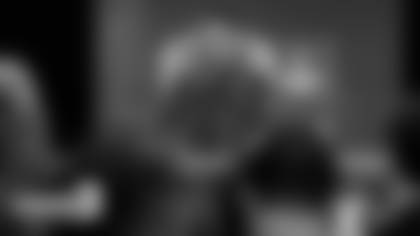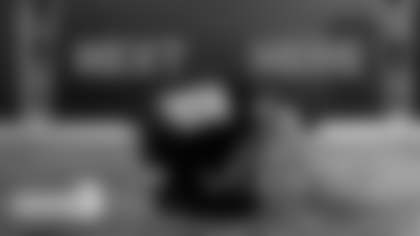*Three Giants writers assess the team following Monday's loss to the Lions: *
Following Monday night's loss to Detroit, the Giants stand in a 0-2 hole to start the season, the opposite of where they were a year ago. In this week's Cover 3, our writers talk about the biggest difference between the two starts.
JOHN SCHMEELK
|
|||||||||||||||||||
While most of the attention is being paid to the Giants' problems on offense -- and understandably so -- an issue on defense has emerged that has been surprising: a poor rush defense. The Giants are allowing 133.5 yards per game on the ground (28th in the league) and 4.2 yards per carry (20th). Last season, the Giants allowed 88.6 yards per game (fourth) and 3.6 yard per carry (tied for second). Given the Giants' personnel has been largely unchanged on the defensive line besides the departure of Johnathan Hankins, such a regression is rather shocking.
The domino effect from being worse against the run is showing up on third down. The Giants are allowing teams to convert 50 percent of their third downs this season as opposed to 35 percent last year, which was good for third in the league. The defense's inability to get off the field is only exacerbated by the offense's issues sustaining drives and scoring points.
DAN SALOMONE
You'll hear a lot of stats this week, but the only number you need to know is 13. The Giants missed Odell Beckham Jr. entirely in Week 1 and had the Pro Bowl wide receiver on a pitch count in Week 2 stemming from a preseason ankle injury. As tough as things looked at times in the first two games, the Giants were one big play away from either tying it up or at least making it interesting down the stretch. And who does that better than anyone else in the NFL? No. 13. He's the spark plug that can get the offense going, both from an X's and O's standpoint as well as in terms of energy. He can turn bad into good.
LANCE MEDOW
Last season, the Giants finished third in the NFL in third down defense. They allowed opponents to convert just 35 percent of the time. While the Cowboys went 10 for 17 on third down in the 2016 opener, Drew Brees and the Saints managed to convert just three third downs out of 13 opportunities (23 percent) and, for the most part, the defense maintained that level of stinginess for the remainder of the season. That hasn't been the case in 2017. Through two games, the Cowboys and Lions combined to go 15 for 30 (50 percent) on third down. To put things in perspective, the team with the worst third down defense in 2016 was the Redskins as they allowed their opponents to convert 47 percent of the time. So why has there been a drastic change from 2016 to 2017? The Giants aren't putting their opponents in many third-and-longs and that's a reflection of the lack of consistent stops on first and second downs. Of the 15 third downs the Cowboys faced in Week 1, 10 of them were for six yards or less. Monday night, the Lions were challenged a bit more in terms of down and distance but Detroit managed to convert third-and-nine, third-and-11, and third-and-12. So even when the Lions were put in a precarious position, the Giants had trouble making consistent stops.
The same can be said for the offense. Last season, through the first two games, the Giants were 12 of 25 (48 percent) on third down. This season, they're 8 of 24 (33 percent). Third down efficiency is a huge indicator as to how effective an offense runs. Based on those numbers, it shouldn't be a surprise that the Giants have just one touchdown this season versus three, at this point, last season. Another big contributor to the third down struggles, especially against the Lions, was pass protection. The Giants allowed five sacks Monday night. They surrendered just four in the first two games combined in 2016. When the offense has trouble staying on the field and the defense has issues getting off the field, a 2-0 record can easily be flipped around.
















